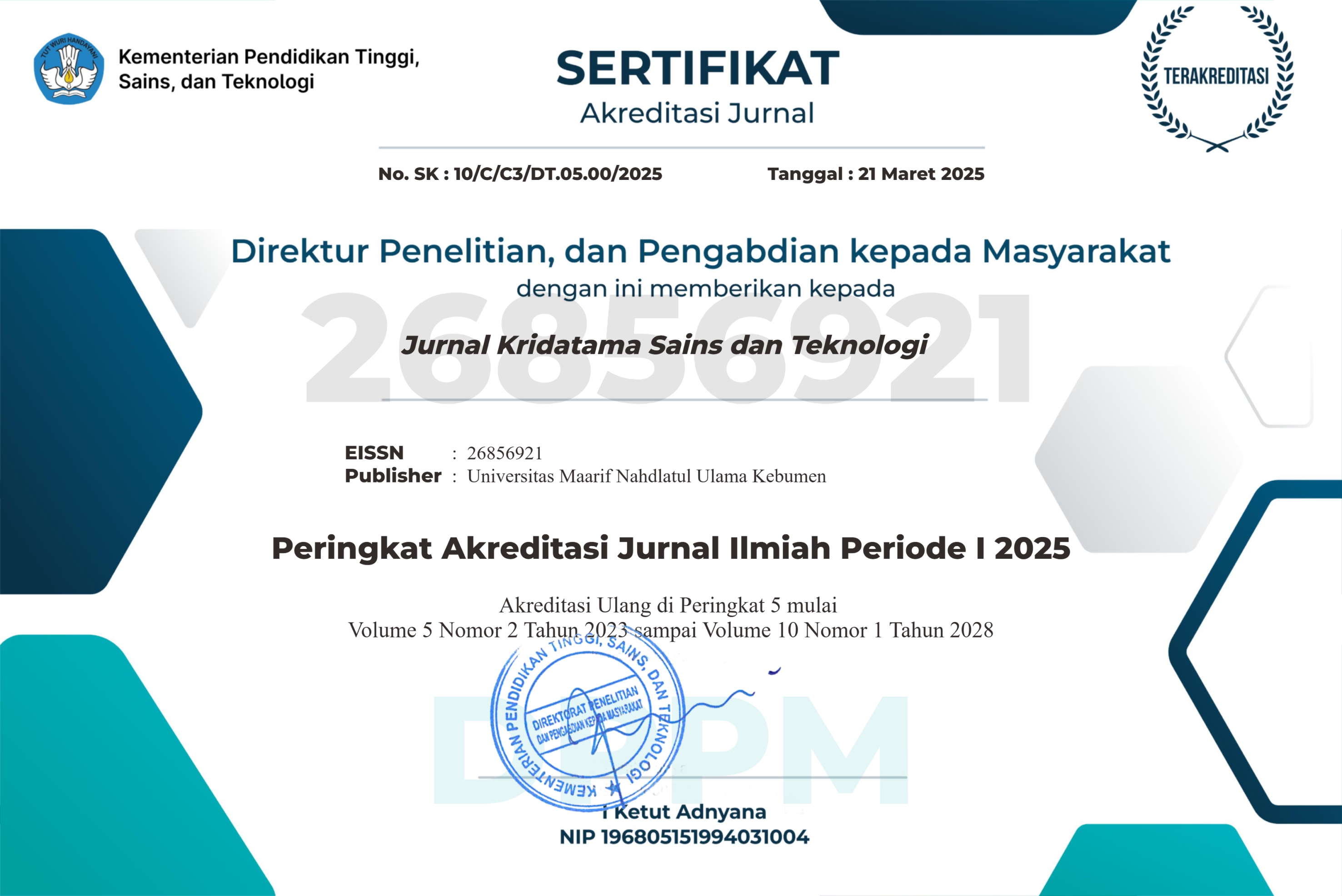Analisis Algoritma Klasifikasi dalam Pembelajaran Sistem Informasi Geografis di Pendidikan Informatika
DOI:
https://doi.org/10.53863/kst.v7i01.1676Keywords:
geographic information system, classification algorithm, project-based learningAbstract
The rapid development of information technology has encouraged the use of spatial data in various fields, including in education. This study aims to analyze the application of classification algorithms in the learning of geographic information systems (GIS) at Citra Bangsa University. The main focus lies in how students understand and implement algorithms such as K-Nearest Neighbor (K-NN), Decision Tree, and Naive Bayes in the context of spatial data. The approach used is descriptive qualitative with data collection techniques through an open questionnaire to 26 students of Citra Bangsa University, who followed project-based GIS learning. The results of the study show that the use of classification algorithms can improve students' understanding of basic GIS concepts, especially in spatial data processing and visualization. And also the results obtained from 26 students with different percentage points for the questionnaire given. Nonetheless, some obstacles were found such as technical difficulties in the data classification process and low initial understanding of algorithm concepts. This study provides an overview of the importance of integrating the concept of algorithms and GIS in the learning process to improve students' competencies in the field of spatial technology
References
Arikunto, S. (2019). Prosedur penelitian: Suatu pendekatan praktik (Revisi). Rineka Cipta.
Braun, V., & Clarke, V. (2022). Analisis tematik: Panduan praktis (Edisi Bahasa Indonesia, diterjemahkan oleh M. Nugroho). Penerbit SAGE.
Flick, U. (2019). Pengantar penelitian kualitatif (Edisi Bahasa Indonesia, diterjemahkan oleh R. Prasetyo). Pustaka Pelajar.
Hartono, R., & Susanto, H. (2021). Pengembangan pembelajaran berbasis algoritma klasifikasi pada sistem informasi geografis. Jurnal Teknologi Pendidikan, 23(3), 156–168. https://doi.org/10.1234/jtp.2021.233156
Kuckartz, U., & Rädiker, S. (2022). Analisis data kualitatif dengan MAXQDA (Edisi Bahasa Indonesia). Springer.
Moleong, L. J. (2017). Metodologi penelitian kualitatif (Edisi revisi). Remaja Rosdakarya.
Patton, M. Q. (2015). Metode penelitian dan evaluasi kualitatif (Edisi Bahasa Indonesia). Pustaka Pelajar.
Prasetyo, A. D., & Nurhayati, T. (2021). Integrating spatial data classification in project-based learning to improve students’ computational thinking. International Journal of Educational Technology in Higher Education, 18(1), 1–17. https://doi.org/10.1186/s41239-021-00252-9
Rahman, A., & Yulianto, B. (2023). Analisis pengalaman mahasiswa dalam pembelajaran sistem informasi geografis menggunakan pendekatan kualitatif. Jurnal Pendidikan Informatika, 9(1), 22–34. https://doi.org/10.5678/jpi.v9i1.2023
Sugiyono. (2018). Metode penelitian kuantitatif, kualitatif dan R&D. Alfabeta.
Widodo, E., & Prasetya, M. (2022). Hambatan pemahaman algoritma klasifikasi pada mahasiswa dalam proyek SIG. Jurnal Sistem Informasi dan Komputer, 10(2), 45–53. https://doi.org/10.7890/jsik.v10i2.2022
Downloads
Published
How to Cite
Issue
Section
License
Copyright (c) 2025 Benediktus Kurniawan Paju, Diana Yanni Ariswati Fallo, Sergius Erdin Mowata

This work is licensed under a Creative Commons Attribution-ShareAlike 4.0 International License.
Authors retain copyright and grant the journal right of first publication with the work simultaneously licensed under a Creative Commons Attribution-ShareAlike 4.0 International License that allows others to share the work with an acknowledgment of the work’s authorship and initial publication in this journal

















